TORG ETERNITY by Evil Mastermind
DON'T CALL IT A COMEBACK
Original SA postThe storm has a name...Let's Read TORG ETERNITY
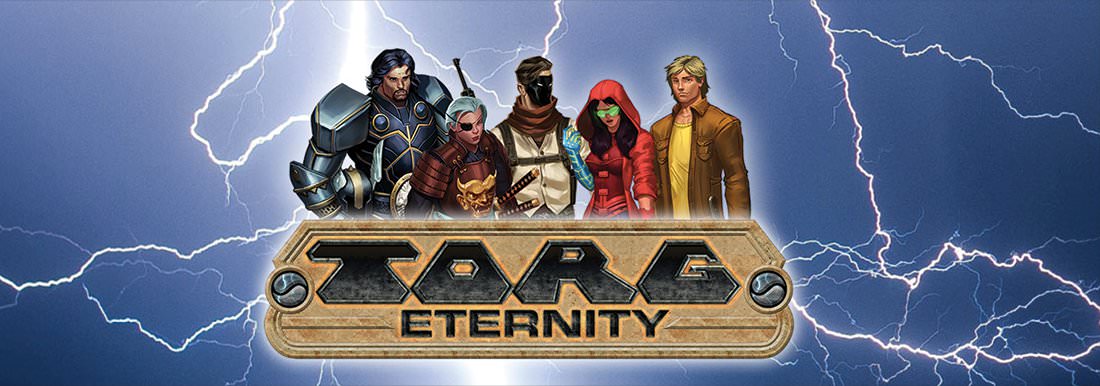
PART 1: DON'T CALL IT A COMEBACK
Torg.
Man, Torg.
I've written a lot about Torg. I mean, a lot. Probably more than anyone not actively working on Torg has written about it.
Because just as I said ages ago, I do love it. Yes, I still maintain that it's the epitome of 90's RPG design: rules-as-physics, ridiculous metaplot, too many goddamn subsystems, needless levels of detail nobody cared about, and so on. And the rules were way too complicated for their own good.
But the thing is...I'm a sucker for anything "multiversal". That shit is straight up my jam. There's just something about the idea of different genres impacting each other and each being represented as a faction in a greater war? Hell yeah sign me up!
Thus my weird love/hate relationship with the game. It's what led me to decide to review the entire Torg game line. I loved the setting, but hated the system. And I like to think I brought a few people around here to that level of love/hate.
Torg became a sort-of forgotten game after the 90's, due in part to its owner West End Games going through a lot of bad choices and the rights to the game being effectively locked away. Then, last year, this happened:
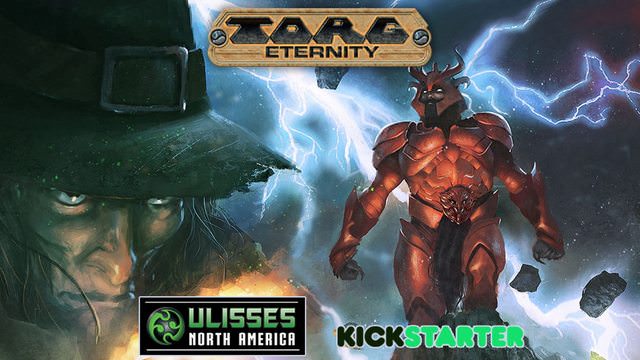
German RPG publisher Ulisses Spiele (makers of The Dark Eye, Germany's #1 fantasy RPG) bought the rights to the game and launched a kickstarter for a new edition. They had a bunch of changes listed...a new perks system in place of the old powers stuff, more options for characters from places like Core Earth or Nippon Tech, and so on.
And of course, with any new edition comes the question: are they actually going to fix the old version's problems, or are they going to leave them in for the sake of "nostalgia"?
I still backed it anyway, knowing it was probably going to break my heart. And now, about a year later, I have the physical book in my hands.
So now, the question on the table is: Is Torg Eternity good?
Let's find out!
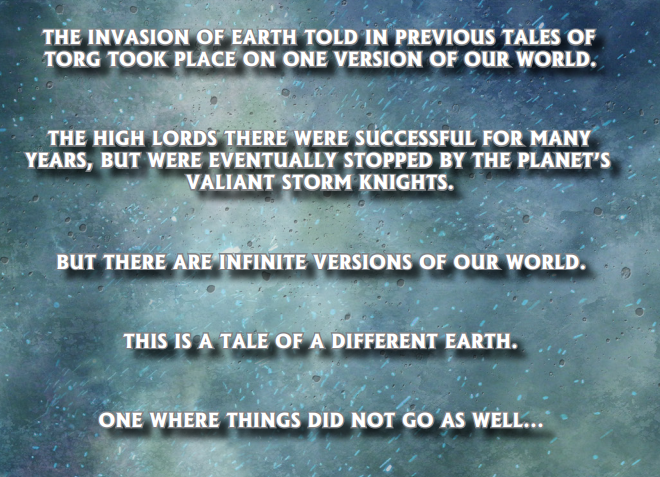
THERE CAME A TIME WHEN THE OLD GODSwait, wrong intro.
So right off the bat, we're told that this is going to be a different thing. Because it's not a reboot.
The events of the original Torg line happened, and more importantly they stayed happened. The invasion as described in the original novel trilogy, The Gaunt Man was trapped in a pocket dimension just before the "start" of the RPG, Tharkold's bridge into Russia was destroyed before they could touch down. Other events, which I haven't gotten to in the other Torg review, all still occurred. And in War's End, the Gaunt Man was defeated once and for all.
But in an infinite multiverse, there can't be one of anything.
This is a different Core Earth being targeted for invasion. These are different iterations of the invading cosms and their High Lords. The song's the same, just...by a different band.
So before getting into the mechanics of Torg Eternity, let's take a look at how the cosms have changed.
First up, Core Earth. It's, well...here, in the year 2018. Not much to really get into here in a general sense, but there have been a few changes to make things a little more game-able.
One of the main changes is in the nature of the Delphi Council. Originally, it was the "temporary" United States government put in place in the wake of DC getting Living Landed. Now, it's a multi-national concern focused on finding, training, and coordinating Storm Knights. Which is to say, they're an easy way for the GM to set up adventures as well as giving a reason why a ninja from Japan, a priest from France, and lizard dude would all be hanging out together.
The chief operative of the Council is Quinn Sebastian, who was a significant NPC in oTorg. He knows more than anyone who isn't a High Lord about the invasion.
quote:
He’s the prime motivator behind the Delphi Council. He’s parleyed his uncanny knowledge of the High Lords and their tactics into a position of power, but he’s also a mistrusted outsider.
His knowledge also isn’t complete. It’s roughly the equivalent to a player familiar with the previous edition of Torg, and relates mostly to how the war played out in those books.
But the war in Torg Eternity is different. Even some aspects of reality don’t work quite the same, so Quinn has blind spots. His largest worry is PanPacifca. He is certain a High Lord is at work there, but of litle else beyond that.
As the war progresses and his knowledge becomes increasingly obsolete Quinn may be displaced from his leadership role. Likewise Quinn’s destruction is a priority for all the High Lords, who consider him the most dangerous man on Core Earth.
Asyle is in broad strokes, pretty much unchanged. Uthorion still possessed Lady Ardinay and ran the cosm as her without anyone knowing. He was a little more subtle this time around, though. Instead of just walking around in her body 24/7, Uthorion would possess her to sow discord between the major Houses and non-human races, and when done he'd just...leave. Ardinay's body would then sink to apparent deep sickness, which just further destabilized the throne. Around the time of the invasion, Tolwyn of House Tankred (ugh) popped up again and drove Uthorion out of Ardinay's body, curing her.
Of course, by that point a lot of damage had been done.
For starters, the dwarves were almost wiped out as a race due to Uthorion's workings. The survivors aren't sure they're buying this whole "I was possessed but I'm better now" thing, but they're still fighting for the Light because that's about all they have left. On the plus side, they figured out how to make cool magical power armor.
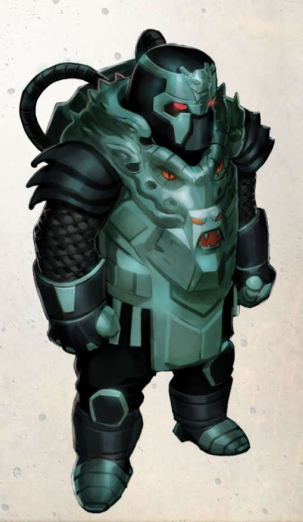
Support your local tank.
The elves, on the other hand...they're doing pretty well, actually. Although to be fair that's because they sold out to The Gaunt Man.
Back before the invasion, the elves figured out who Uthorion's boss was, and cut a deal with him to stop him from directly attacking the elven lands. In exchange for their safety, they pointed The Gaunt Man at another reality they'd discovered that contained a very powerful Possibility-altering weapon. So the elven lands were saved, but The Gaunt Man wasted no time in destroying the revealed cosm and seizing the weapon for himself. We'll get to that when we get to Orrorsh, but suffice to say the elves are not proud of what they did and are working hard for redemption. Preferable without anyone else finding out what they did.
As for Uthorion and Ardinay, they're both still active in their battle for control of the realm. This time around, Uthorion isn't just sitting on his hands; he's assembled a barely-allied Dark Council of monsters and general bad guys to
Ardinay, meanwhile, is just trying to mitigate the damage done by the invasion. She's still the only real ally Core Earth has, and is still the Good And Pure Queen...except when Uthorion is involved. Ardinay is obsessed with killing Uthorion, to the point where she will drop everything and throw as many forces as she can at him whenever he pops up, regardless of the cost. So far she's managed to keep this a state secret, but if the knowledge ever leaks out it wouldn't be good for her already shaky position.
The Cyberpapacy has changed quite a bit, mostly due to how we (as a culture) have adapted to the internet and how it's changed since the mid 90's. A significant reason for this in-game is that the backstory of the Cyberpapacy has changed; this time around, Magna Verita has always been a cyberpunk world as opposed to it being an inflicted recent change. As such, the Church is very comfortable with high technology, thank you very much.
The GodNet still exists, and is once again both cut off from the larger internet and pervades every piece of technology in the realm. Thing is, while that was bad back in the 90's when we still didn't quite get this whole "internet" thing, it's a hell of a lot scarier in a post-"Internet of Things" world. The fact that your smartfridge could turn you in to the Inquisition for heresy is funny...until you think about it for a few seconds.
On top of that, Malraux has figured out how to gameify faith. Every citizen of the Cyberpapacy has a "piety score" that tracks how loyal they are to the Church. The better your score, the more favored you are, and the easier your access to legal cybertech.
quote:
Activities that show acceptance of the Cyberchurch and participation in its rituals add to the user’s score. Violations (such as taking the Lord’s or Jean Malraux’s names in vain) elicit reprimands and pleas for the sinner to go to confession, but never subtract points.
Some in the College of the Way find it distasteful that Malraux is turning worship into a game, but the practical results have been undeniably effective. Early achievements are simple and innocuous, while darker, hidden achievements worth more points unlock if performed or once certain score
milestones are reached.
Encourage players to track their Piety Score while inside the Cyberpapacy. There are no direct mechanical benefts to a high score—yet. Scores are readable, and might provide clues about an individual’s atitude. Church Police are highly prejudicial based on these scores as well.
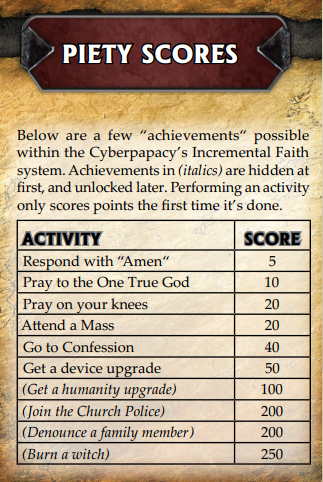
If I burn three more witches I can get a new GodNet avatar!
Oh, and just to point this out: cyberpsychosis is no longer a thing. That's not to say that cybernetics don't have their drawbacks, but we'll get to that later when I get to the new mechanics.
The Living Land has gotten a complete overhaul. It's still the low-tech/low-magic realm where dinosaurs roam and lizardmen run the show, but now there's actually more to it than just "the low-tech/low-magic realm where dinosaurs roam and lizardmen run the show". In fact, there's actually reasons to go there now!
Probably the most significant change to the Living Land is to Baruk Kaah himself. Originally, Kaah was basically the series' whipping boy who couldn't get a win if it was handed to him on a platter. In oTorg, Kaah lost half of his North American territory before the game even officially starts, kept losing territory after that, got clowned by pretty much everybody up to and including his Darkness Device, and ended up getting sucked into a wormhole-y thing through his own stupidity.
This iteration of Kaah is very different. In fact, he's probably the most successful High Lord so far in terms of expanding his territory; by the end of the first year of the invasion he's taken over about a third of the United States, and managed to get a foothold in Central America. He's also got a much better relationship with his Darkness Device, to the point where it transforms into a spear for when Kaah is personally hunting down Storm Knights.
That said, Kaah is still twisting the Keta Kalles religion to his own ends, to the point where the definition of "dead things" has been tweaked a bit. Now, things that were once alive aren't anathema, which means that the edenios are using bone, leather, and such to make weapons and armor. This has the nice side-effect of allowing different edenios tribes to have their own distinct shticks based on their individual styles. For instance, there's the Ghost Clan that specializes in camoflague and stealth, or the Whitespear clan that's actively fighting back against Kaah.
The biggest change to the Living Land, however, is the addition of "reality fragments". Littered throughout Kaah's territory are remnants of his past conquests: old forgotten temples that weren't there before the invasion, crystal spires, even cities from unknown civilizations. These shards, which maintain their own axioms, are high-priority targets for both Kaah and the Delphi Council due them containing all kinds of fun lost technologies, magic, lost tribes, or portals to who-knows-where. In fact, there are rumors that Meretteka is actually somewhere deep in Kaah's territory.
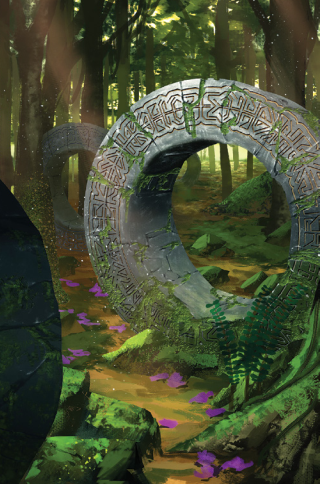
Nice crop of stargates coming in this year.
And just to pause: I really like these Living Land changes. The fact that Kaah is a serious threat now, combined with the fact that there's stuff to do in the LL (not to mention how disconnection is far less punishing now) make it a viable location for adventures. It has a point now, which was always sorely lacking in a lot of oTorg's material. I said back when I started reviewing the Land Below sourcebook that it felt like an attempt to "fix" the problems with the Living Land by replacing it rather than going back and fixing what was wrong with the original, and thankfully the new edition took the mistakes of the original line to heart.
Moving on, the Nile Empire is the realm that changed the least. In fact, it's pretty much the same as it was the first time around, which makes sense. After all, why mess with perfection?
Doctor Mobius is still the same monologuing wingnut we all know and love, and he's brought his second-in-command Wu Han along for the ride. Mobius has taken over Thebes as the seat of his empire, leaving Cairo to Wu Han. He's also not expanding anywhere near as much now; rather than controlling half of Africa out of the gate he's only really pushed into the Sudan, Ethiopia, and Saudi Arabia.
Orrorsh, on the other hand, has quite a few changes. The most important change, both to Orrorsh and the setting as a whole, is that the Gaunt Man is still around. Again, the novels didn't happen, so he didn't get sucked into a pocket dimension for the first year and change of the invasion. This means that Orrorshian territory is expanding steadily as opposed to stagnating due to not having a driving force.
The Gaunt Man's territory has been changed from Indonesia to India and Pakistan, but despite the new location the same old problems with the Core Earthers exist. The inherent racism of the Victorians has been heavily dialed down (or at least isn't so overt), but but this is still a part of the world that has had a problem with the colonials coming in, taking over, and saying "you're welcome". And while the Indian government has reluctantly allowed a few Victorians into the government as "consultants", those consultants are slowly working their way up to more power in the region...for its own good, of course. Not helping matters was the discovery that the Victorian leader Sir Avery Wellington was actually part of the Gaunt Man's inner circle.
In addition to the usual array of Horrors and gospog, the Gaunt Man has two new weapons in his arsenal: Nightmare Trees and Dimthread Trees. These are the weapons that the Ayslish elves traded their safety for: growable Orrorshian hardpoints that, at night, can turn the area into an Orrorshian mixed zone up to 40 km in diameter. On top of that, Dimthread trees allow the Gaunt Man's operatives to teleport between them as needed.
Conspicuous by his absence is Thratchen, who was fairly important the first time around. Presumably he might show up later, but it's nice to see that they're cutting down on major NPCs.
Nippon Tech has also seen a few changes, starting with a new name: Pan-Pacifica. Once again, the Kanawa Corporation managed to invade in secret, and Ryuchi Kanawa (apparently his real name now, not 3327) has managed to expand his holdings over all of Japan and a sizeable chunk of China. Even Quinn Sebastian, who seems to know too much about the invasion, doesn't know with 100% certainty that something's happened in that region.
The big problem Japan and China are dealing with now is, believe it or not, a straight-up zombie invasion. Since the invasion started, people have been mutating into jiangshi. Nobody knows where they came from (although the popular theory is Orrorsh), but people who become infected quickly mutate into fast-moving zombies, and the infection can be further spread via bite or scratch, and in fact jangshi can mutate further into bigger monsters. The appearance of the jiangshi caused a great deal of chaos in the early days of the invasion, but thankfully the Kanawa Corporation came to the aid of the government in its time of need in the form of corporate police forces and lots of weaponry. Isn't that nice of them? And they're very good at spotting infected people before they turn so they can get them off the streets and away from the populace at large.
Setting spoiler: The jiangshi were, of course, created by the Kanawa Corportaion. The plague is what you get when you turn gospog into an airborn virus. While the virus only lasts a few hours in its airborn state, once it infects someone it can be passed along in all kinds of fun ways.
In terms of tone, Pan-Pacifica has a very "Resident Evil by way of John Woo" feel now. Corporate culture is downplayed in favor of what life's like at street level for the average citizen. The Laws of Intrigue and Vengeance are still in effect, but now it feels more cinematic. It helps that the available character options give players a bit more identity than just "office worker" or "corporate ninja".
Oh, and Ryuci has brought his sister Reiko along for the invasion. Reiko has become a media darling, a lovely spokeswoman who moves easily from talented artist to humanitarian aid, all in front of the cameras and is in no way a distraction away from Kanawa's actually operations, nosiree Bob.
Lastly, we come to Tharkold, which has been reworked from the ground up. Like the Living Land, the basic ideas of the realm have been redone with an eye to making it worth people's time to go there.
The first change that needs to be brought up is that the Tharkoldu have won the War. Humanity on Tharkold have been fully subjugated, the Free Nations have fallen, and the technodemons are running the show.
As in the original timeline, Kranod's job was to invade Russia. This time around, the Russian government didn't have a Kanawa-funded psionic research project going on, which meant that the Tharkold stelae weren't uprooted and the maelstrom bridge did indeed touch down just outside of Moscow. There was a tense moment when it looked like where a Race resistance cell were going to manage to stop the bridge, but Kranod's chief thrall Jezrael managed to seize victory for her master.
That's probably the last good thing that's happened to Kranod.
In all the chaos of the initial invasion, worldwide communication was cut off. Not knowing what was going on elsewhere, and not knowing what else to do, Russian president Aleksandr "The Wolf" Volkov launched a tactical nuclear missile at the bridge.
Moscow was destroyed, as were thousands of Russian civilians and technodemons. As was the bridge, which suffered a direct hit from the nuke. But that was just the start of the problems.
It turns out that nuking a maelstrom bridge, while effective in the short term, is a really bad idea in the long term. Yes, the bridge was destroyed and stopped the flow of technodemons into Russia...but the combination of nuclear fallout, possibility energy, and two different realities all mixed together and spread as a mass of radioactive mixed-reality energy that spread throughout most of Siberia. This region was warped in the ensuing reality storm, spreading Tharkold-level technology with it and mutating the local wildlife that wasn't killed in the initial wave. What's more, this zone wasn't contained by stelae.
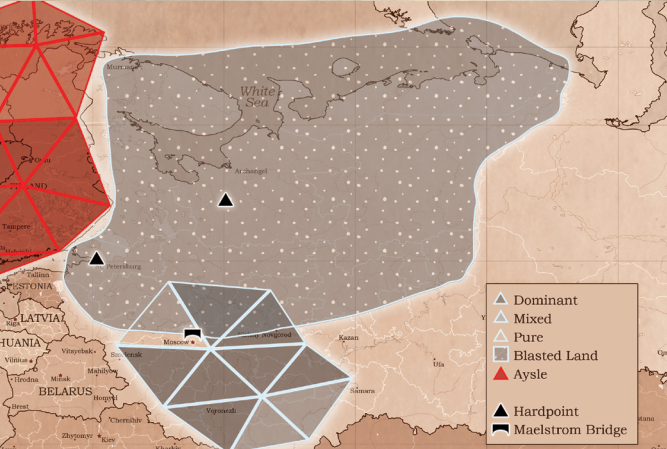
That can't be good for anyone involved.
So now most of Russia can best be described as "Clive Barker's Fury Road". Mutants, technodemons, Race soldiers, and Core Earths are all rocketing around a magically radioactive wasteland and scavenging the wreckage from the bridge's destruction to give their side an advantage over the other.
While Krandod did manage to get a second bridge dropped and a few actual stelae zones set up, the damage was done. And it was a lot of damage.
For starters, the explosion had a similar reaction to when the bridge was stopped in the original continuity: Core Earth's reality surged up the connection into Tharkold proper, causing reality storms that ravaged the cosm. But this time around, the sudden infusion of Core Earth's axioms caused all the high-tech methods of keeping the Race in line were destroyed, and Core Earth's world laws temporarily shorted out the Law of Domination, allowing the Race to start fighting back against the technodemons.
Second, there's the fact that Tharkold kind of operates on Chronicles-of-Riddick "you keep what you kill" rules. The nuke killed one of the higher-ranked demon Dukes, and since it was ultimately Volkov's finger on the button, Kranod has declared that Volkov is now the ruler of the dead Duke's demenses. Kranod and Volkov have signed a peace treaty, and now the Tharkoldu co-rule Russia with Volkov. The other Tharkoldu aren't happy about having a human on the same level as themselves (not to mention "making peace" with the monkeys), and there have been a few attempts to usurp Kranod. Fortuntely for him, Jezrael is there to pull his ass out of the fire and kill his enemies.
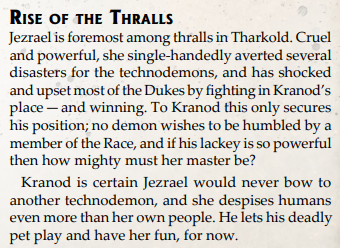
I'm sure nothing will come of this.
Lastly, the destruction of the bridge was a major turning point of the invasion a a whole because it showed that the invaders weren't unstoppable. Yeah, there was a huge cost, but even this victory was enough to infuse Core Earth with a wave of hope, making the invaders' job that much harder.
Needless to say, the Gaunt Man is fucking pissed at Kranod. Instead of doing his part like everyone else, he's botched his invasion to the point where he's actually made peace with the Core Earthers. it wasn't on purpose, but he's given them hope. Kranod is well aware of how precarious his position is now, and most of his energy is keeping as much of his weaknesses secret as he can.
Oh, and the humans from Tharkold are starting to manifest psychic powers. Just throwing that out there.
---
I really like these changes.
It's weird to think about how "so what do we actually do here?" is a relatively recent idea. But it's clear that it's one that's been asked here. It was very clear in the original game line that there were areas that weren't really intended for people to spend a lot of time in (Nippon Tech being the most obvious one) or didn't have enough thought put in the player-facing parts of the realm (pretty much half of the realms).
But that's not the case here. Each realm is presented as someplace where you can do things, there's good GM advice about the types of adventures you can do there, and as we'll see each realm has its own abilities so it's not just two or three realms that give you Cool Stuff.
So we've talked about the setting, but we all know I'm on board with the setting regardless. But what about the mechanics? Is it still a pile of subsystems or has it embraced modern game design? We'll find out...
NEXT TIME: Grand Unified Mechanics Theory
BRAVE NEW MECHANICS
Original SA postThe storm has a name...Let's Read TORG ETERNITY

PART 2: BRAVE NEW MECHANICS
Okay, so I know the big question is "how are the mechanics this time around?" After all, I've made no secret that I hated the original system, and the new systems that were in the cosm books (like gadgets and spell creation) were even worse. Have they fixed things?
Well, before we get into the nitty-gritty, let me hit some important bullet points that I know people want to know about :
- First off, XP and Possibilities are separate pools now. You start every Act with 3 Possibilities, just like Fate's Refresh mechanic. You also get 5 XP per session.
- Second, disconnection isn't a complete fucking over. Not only is it much harder to disconnect, when it does happen you actually get to cash in any abilities that don't line up with your new cosm, then you get new ones to replace them one-for-one at no additional cost.
- You can no longer convert someone to your religion by rolling really well when casting a miracle.
- Being a non-human no longer has a per-adventure cost.
- Axioms and World Laws still exist. However, every World Law now has a mechanical effect, although some of those effects are tied to the new card system.
- Speaking of which: yes, the game still uses the cards, but split into multiple decks.
- Yes, we're still using the Bonus Chart, but now it's tied to a universal mechanic instead of a bunch of different charts.
So let's talk about the Bonus Chart. For those who aren't aware, Torg used a logarithmic scale. This was represented by the Bonus Chart; you rolled a d20, then looked up the roll on the Chart to get your Bonus Value. Then you added the Value to your stat, and that gave you your final result.

As seen at the bottom of your character sheet.
Now, that can seem a bit clunky, but it's fine in practice. But the problem with oTorg wasn't so much the rolling-and-looking up, it was when the GM had to determine if you succeeded or not. In oTorg, that was a problem because the game had multiple resolution tables based on what you were trying to do.
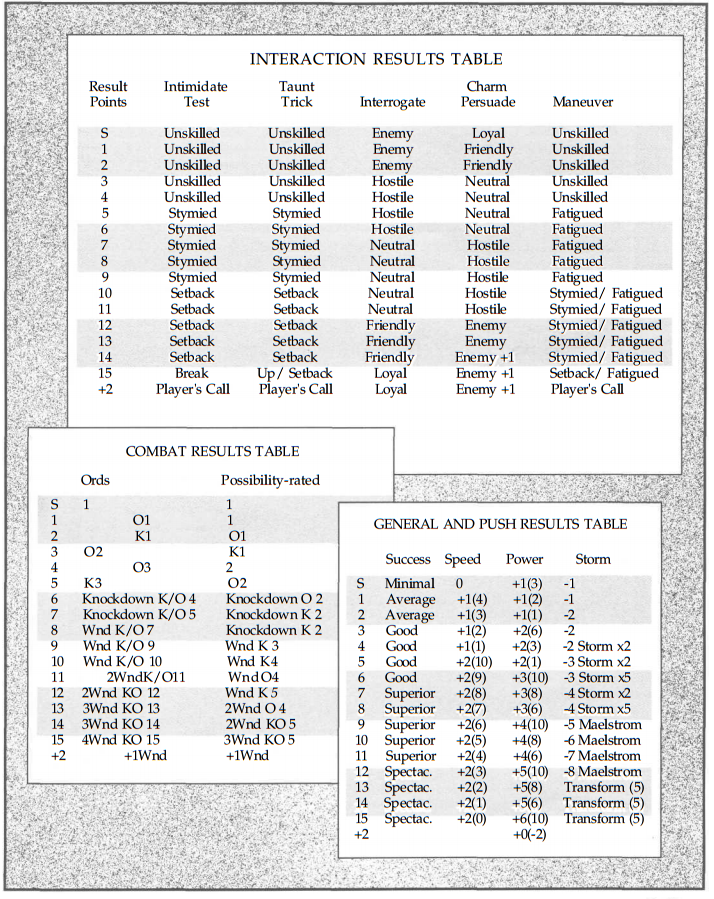
Like so.
On top of that, a lot of times you also had to remember what your Bonus Value was on top of your final result, meaning you had to remember multiple values, so it could become a headache.
Fortunately, Torg Eternity has discovered the joy of the unified mechanic. Now, the default target value for most unopposed actions is just 10. Beat that number (or an opponent's defense) and you did what you wanted to do. If you beat the difficulty by 5 it's a "Good" success, and if you beat it by 10 or more that's an "Outstanding" success, each of which will get you bonuses depending on the skill or ability you're using. Oh, and as an added bonus, the d20 always explodes on 10s and 20s, instead of just 20s unless you were trained in the skill you're using.
And allow me to say: thank fucking God.
One of oTorg's biggest problems, and one of the reasons I always say it's the epitome of 90's RPG design, was its fucking tables and charts. Everything had a damn table, and the GM was supposed to calculate difficulties via more tables, plus various abilities had their own tables and so on and so on.
The fact that you just need to roll, total things up, and compare it to a fixed number makes running the game so much easier you have no idea.
The most complication you get with rolling is with damage; if you beat a target's defense, your weapon deals a flat damage number. Getting a Good or Outstanding success can get you Bonus Dice (basically d6's, where "6" is "5, but roll again and add") to add to the weapon's damage. Then you see how much your damage beats the target's Toughness. There is a table for this, yes, but it boils down to "for every 5 points you beat their Toughness by, you deal a Wound and 2 Shock damage. If you don't beat it by 5, you still do some Shock." Again, very simple, very easy.
Now, cards on the table: I've run Torg Eternity for a few months ever since I got my PDFs. I played it in person with my normal group and over Roll20 for some TradGame goons, and normal rolling and combat move pretty quickly. The people I've run it for haven't had a hard adjusting to the system, which is nice. The severe reduction in moving parts really comes out in play, and it's nice to see systems that aren't needed being removed.
Helping matters is the reduction in the skill list. oTorg had the problem of having a very granular skill list, stuffed with things like "Photography" and "Space Vehicles" that were either utterly useless or so specific they'd never come up.
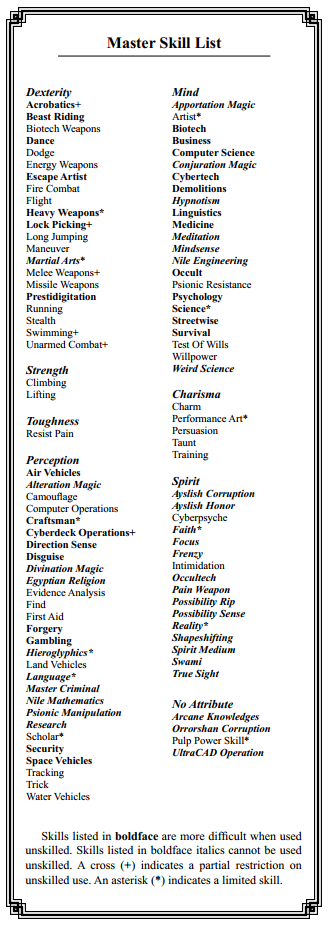
You thought I made up the Space Vehicles skill, didn't you?
For the record, that's 99 skills listed; "Arcane Knowledges" and "Pulp Power Skill" are actually sub-lists that add another dozen or so skills. Torg Eternity managed to pare this list down to 40 skills, and even then eight of them are only needed if you want access to certain powers like magic. The rest are all things you'd be expected to roll for under normal circumstances. There are still the four base magic skills, but now you don't need the other skills that had no purpose outside of making spell prerequisites difficult to figure out and complicating the spell creation process.
One thing I have to give props for is how the character sheet is set up for your skills. There's specific sections for your combat skills, your interaction skills, and your three defenses. The way it's set up you can still fill in the default values for the skills you don't have in case it comes up, which cuts down on the "wait, what do I add to this again?" factor.
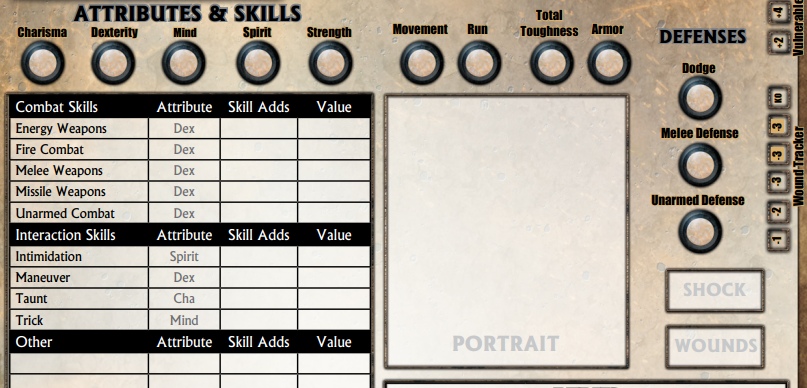
And everything in its place.
Interaction skills have been adjusted as well. Originally, each of the interaction skills had about a page of mechanics on how you could use them to perform social attacks in combat to do things like impose penalties, inflict one of about a dozen status effects, or knock cards out of people's hands. Now, all four skills work the same way, just keying off different stats. If you succeed at an interaction attack (the target's defense being their value of the same skill), you can make them either Stymied (-2 to all actions until the end of their next turn) or Vulnerable (everyone gets +2 to hit them until the end of their next turn). Higher successes can allow you to double up the effect, inflict both effects, or just narrate a drawback for the target like dropping their weapon or missing a turn.
Now some of you might be saying, "hey, that sounds a lot like creating advantages in Fate."
Yes. Yes it does.
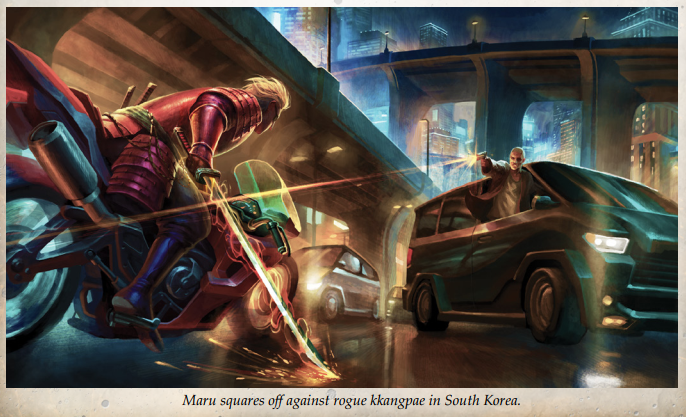
Did I mention that the art is so much better now?
With that all out of the way, let's talk about characters. Specifically, let's talk about what characters can do.
Back in oTorg, it was the 90's and as such every power type worked differently. Magic spells worked differently from miracles, pulp gadgets were fucking nightmare of rolling and blueprints, cybernetics were a headache, running the GodNet was the old "Netrunner's Magical Side Adventure" problem, and don't get me fucking started on spell creation.
All that shit's out the window.
The power system has also been worked into a unified "Perks" system. The easiest way to describe it is as a sort of feat system with much smaller trees, or (to be more accurate) the Advantages system from Savage Worlds.
Perks cover skill boosts, supernatural abilities, special gear, cybernetics, natural talents, all kinds of things. There's just short of 90 of them in the core book, and they're conveniently split up into categories. Some of these categories, such as "Prowess" or "Leadership", can be bought by anyone regardless of where they're from. Most Perks do have prerequisites, but they're generally just skill or stat minimums.
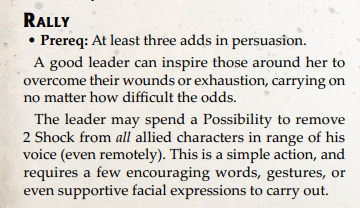
Each cosm also has its own specific Perks, that cover what makes Storm Knights from that reality unique, although some are shared between worlds. I'll give a quick run-down of who gets what.
Core Earth gets access to Perks that cover how adaptable we are in terms of reality. This means that you can take perks that increase your personal axioms, let you give other people your Possibility points, or even become immune to causing contradictions. On top of that, Core Earthers get access to Perks that used to be things that anyone could do: negating NPC's Possibilities, and invoking reality storms.
Aysle gets "Light" and "Darkness" Perks, which tie into the oTorg Aysle ideas of Honor and Corruption. Things are a little less black-and-white now, though; it's made clear in the game that it's a more Paragon/Renegade distinction. Light Perks are more paladin-ish, whereas Darkness Perks are more sneaky. There are also racial Perks for elves and dwarves (such as the aforementioned dwarven power armor.
quote:
Dragon Warriors are the last champions of the dwarves who were virtually annihilated in Aysle. As a fnal desperate measure, they built suits of powerful, arcane armor designed to slay Uthorion’s hated minions. Most knew they would perish in them.
Dragon Warrior armor contains incredible weapons, gadgets, and devices that transform the wearer into an engine of vengeance. It adds Armor +4, limits the wearer’s Dexterity to 8, and causes two extra points of Shock any time Fatigued comes up on the Conflict Line.
The Cyberpapacy, shockingly, gets access to cybernetics. Thankfully, this is nice and simple: the first time you buy the Perk, you get $10,000 worth of cyberware; each time after that you get $5,000 worth. Done. The list of upgrades is fairly short, but it's stuff you'd actually use instead of stuff like nasal implants. People from the Cyberpapacy can also get magic or miracles, and there's no penalties for mixing and matching. In fact, there's actually cyberware that aids in casting spells. Oh, and like I mentioned last time there's no more cyberpsychosis.
The Living Land mainly gets edeinos-specific abilities like Whip Tail or Chameleon Skin. That said, there's a Perk that lets you have a pet sabre-toothed cat, so that's pretty baller. Not a lot here, really, but I think that's okay given that edeinos can use stuff like bows and armor now.
The Nile Empire still has pulp powers, but all the bullshit like Adventure Costs and drawing up gadget blueprints are gone. Each pulp power is its own Perk, so you can just buy them and be done. Each power also has Enhancements you can take to improve them, but doing so requires you to give the power either one major or two minor limitations. Major limitations are things like "only works at night" or "doesn't work if stymied", minor ones are "can't be used in melee" or, yes, "is built into a gadget".
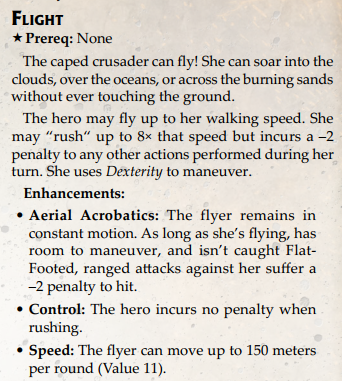
Orrorsh gets some pretty cool toys to represent how the Victorians have been fighting the good fight for centuries. You can be an alchemist and cook up elixirs, have special medals that reward your brave deeds with passive bonuses, or be a Bulletsmith and get access to a cool monster-hunting six-shooter that fires special ammo.

It's basically one of these.
Pan-Pacifica has martial arts abilities that synch nicely with the Perks that make you better with guns for the full Hong Kong action movie experience. There's also the "Electric Samurai"; a new movement that has just sort of...cropped up to fight the High Lords. Buying the appropriate Perk gets you a cool set of Ion Gosaku armor that can be enhanced by further Perks.
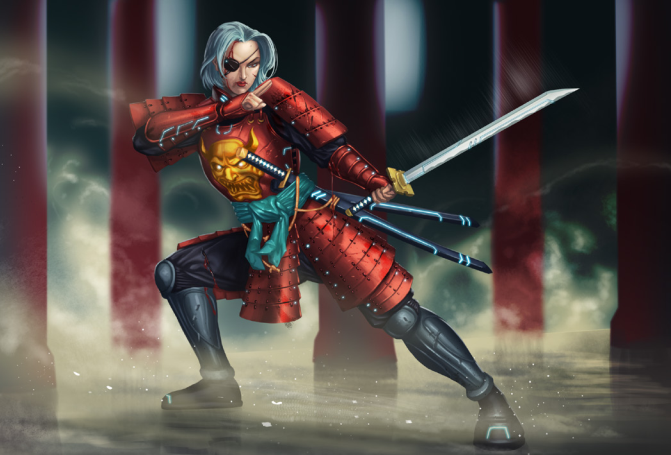
Pretty stylish, too.
Lastly, Tharkold still has Occultech, which is their version of cyberware, and buying works like it does with regular cyberware. Tharkold characters also get access to psionic powers, so they can blow shit up with their minds which is always fun.
Now that we've covered character abilities, we need to talk about disconnection and why it's not a "save vs. eat shit, player" concept anymore.
In Torg, using items or abilities not supported by local reality was a very risky propostion. Using stuff that was allowed by your reality but not the one you're in meant that you disconnected on a roll of 1, and using stuff not supported by local reality and your own reality meant disconnecting on a 1-4. Disconnecting means you're sort of "in flux" between the two worlds as reality tries to collapse your waveform. This hasn't changed. What has changed is what happens after that.
In oTorg, when you disconnected, pretty much the only thing you could do on your turn was make a reality skill check to reconnect, with the difficulty gotten by cross-referencing a chart based on where you're from and where you are. You couldn't play cards, you couldn't gain possibilities (which were also your XP), you couldn't do anything not supported by local reality. If you made the roll you reconnected and you were fine. If you failed, you wasted your turn and had to wait until the next go-round because you could only make one "rolled" action per turn. If the character runs out of Possibility points, or goes too long without being able to make the check, they transform to the new reality, and that's where things started to suck.
When someone transforms, any stuff they had that doesn't line up with local reality just...goes away. Oh, you were Joe Hackerman with some cool cyberware and a kick-ass gun, and you disconnected in Aysle? Well tough shit, all that just vanished in a puff of smoke. Congratulations, your character's no longer able to do what you built him to do. Suck it up, buttercup.
And has been mentioned many times around here, that sucks. The difficulty number to reconnect was swingy as hell, because it was based on how different the two realites were. It's very easy for someone from Core Earth to reconnect while in Nippon Tech because they're very similar, but it's really hard for the same person to reconnect while in the Living Land.
In Torg Eternity, first off making the reconnection roll is a free action with a base difficulty of 10, with a higher difficulty if you're in a dominant or pure zone. While disconnected, you still can't use any ability or item not supported by local reality, but anything else is fair game. If a dwarf disconnects in the Nile Empire, they can't use their dragon armor's cool abilities but their battle axe is still an option. Unfortunately, they can't spend Possibilities, play cards, or even soak damage.
Failing the roll has no immediate consequence...unless you roll a 1. When that happens, you need to either lose a skill add from their reality skill, or switch to the new reality. If they can't lose another skill add, they have to transform.
When a character transforms in Torg Eternity, instead of your non-allowed stuff all breaking and/or vanishing, it will change to the nearest local equivalent if possible. In game terms, this means that you lose any skills or Perks you had that aren't allowed in the new reality.
BUT. And this is important: you then get to pick new Perks and skills, one-for-one, to reflect your post-transformation self. And they don't have to be "nearest equivalent", they just have to make sense for how your character's personality works as filtered through the new reality.
So let's go back to Joe Hackerman, and let's say he disconnected in Aysle after a series of really bad rolls. Let's say he had the Perks "Cyberware" twice and "Double Tap", which lets him fire two shots as one action. Obviously "Cyberware" isn't available to someone from fantasyland, so he needs to trade those two Perks in. Joe's been played as the type of guy who is good at sneaking into places and finding information, so he decides to take the Darkness perk "Shadow Step" to make him better at stealth, and "Spellcaster" so he has access to magic. The GM agrees that this makes sense and lets him move his +3 in science (which he wouldn't need anymore) to divination magic. The "Double Tap" perk is allowable to Aysle characters, so he can hold on to that; it means he can fire two arrows at once from the bow that used to be his gun. As an added bonus, he doesn't even need to shift his skill for that since fire combat covers most ranged weapons.
So yeah he's not a decker anymore, but he's still able to go where he's not supposed to and learn what he shouldn't, which was the core of the character. What's more, he's still playable. He's not stuck sitting on his hands because everything that made him effective was taken away. The book has an example of thinking through a cyberwitch flipping to Living Land and how you could make that work while keeping to the core of the character.
Needless to say, I really like this new system. Transformation is much less of a threat than it used to be (since it requires multiple 1's to be rolled), and even when it does happen it doesn't completely bone your character. Now yes, it can still suck to transform, especially when you can't come up with a new way to work your character into their new paradigm. But given how it's such an outside chance I don't think it's as much of a problem anymore.
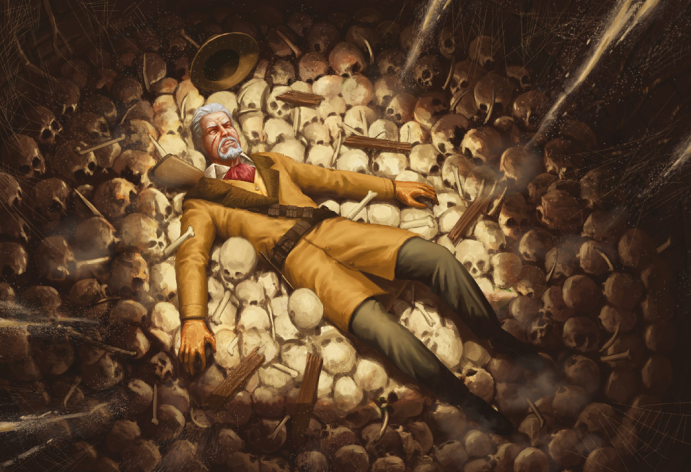
Dammit, this is the third time I've fallen into a skull pile this week.
Spells, miracles, and psi powers have also been simplified thanks to unifying the stat blocks. Instead of needing multiple skills to qualify for a spell or to cast it, everything is based off each effect having one skill and just needing to beat a difficulty number. This means that casting spells and performing miracles work the same way now; no more skill mixing for spells, and no more worrying about everyone's religion when performing miracles. Getting spells/miracles/psi powers is easy; the first time you buy the appropriate Perk, you get three powers, and you can buy the Perk again to get one more power. On top of that, it looks like we're not getting a 500-spell-long list of useless spells this time around.
A nice touch is that they provide lists of what powers would be available starting out based on your home cosm. Each power also specifically lists what bonuses you get with Good and Outstanding successes.
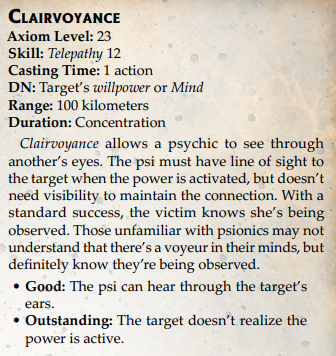
The last thing I want to talk about are the changes to the World Law and card systems, because the two are actually connected.
Like oTorg, the game requires a special deck of cards that serve as the initiative system for the GM and generalized bonuses for the players.
Previously, each card was designed have both uses on each card, like so.
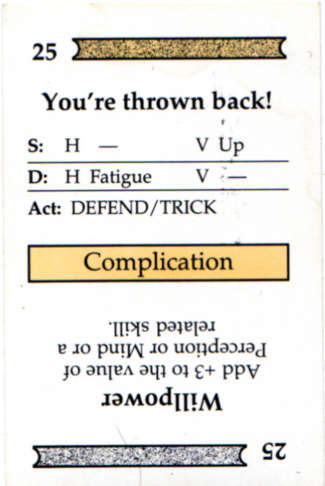
Now, the deck's been split into the Drama Deck (which has just the intiative parts) and the Destiny Deck, which has the player boots.
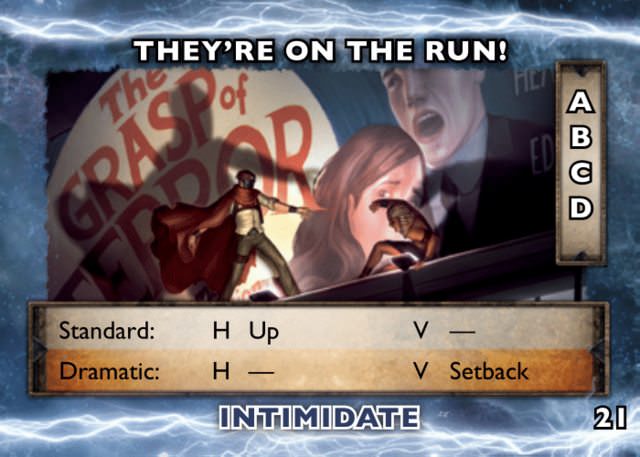
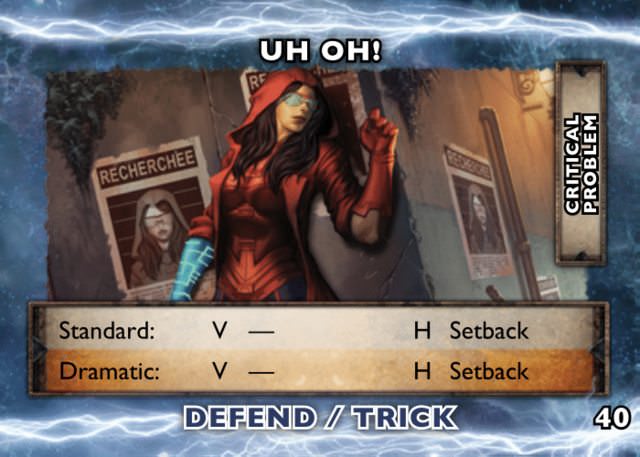
Drama Deck cards
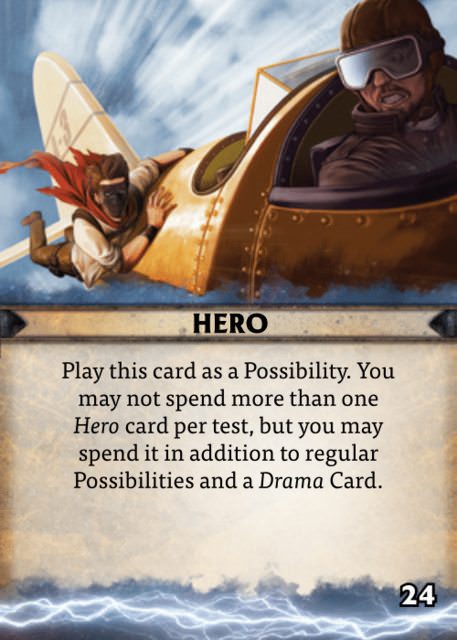
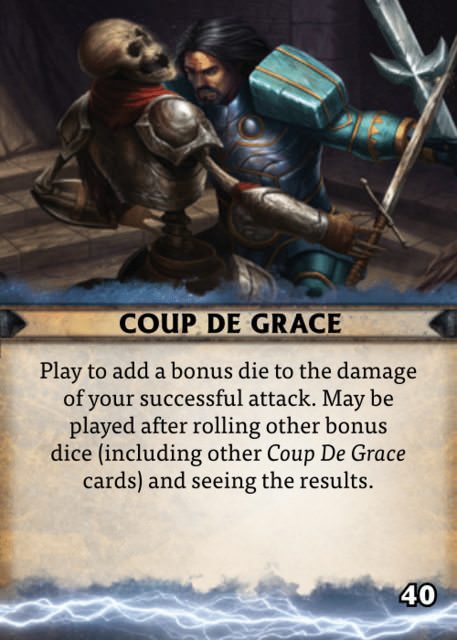
Destiny Deck cards
So far, this is pretty much the same as the original go-round, only split into to decks and much better presented. But now, the card system ties into the World Laws as well.
As before, every realm has its own unique World Laws that basically define the "narrative physics" of that world. Originally, the World Laws were a mixed bag of usefulness. Some gave nice passive bonuses, others...were just pointless.
Now, each cosm has its own ten-card Cosm Deck. In addition to the normal hand of four Destiny cards, at the start of each Act every player also gets one Cosm Card. The Cosm cards cover the World Laws that can't really be utilized as mechanical effect, but can still be invoked by players to gain effects or bonuses.
By way of example, here are the World Laws for Aysle from oTorg:
- The Law of Observation: Everything that is perceived is real; the world works as it is observed to work.
- The Law of Magic: Magic exists.
- The Law of Honor: Being honorable in your life will be reflected on you, and will make you more powerful the more honorable you are.
- The Law of Corruption: Your dark deeds will be reflected in your appearance, but the more corrupt you are the more powerful you can become.
Now, each reality has three World Laws. Two of them are passive effects, while the other is represented by the Cosm Cards.
Here are Aysle's new World Laws:
- The Law of Magic: Magic is very common in Aysle; you can take a number of Shock damage up to your skill adds to get a matching bonus to a spellcasting roll.
- The Law of Light & Darkness: The concepts of Light and Darkness drive much of Aylse; Light isn't automatically "good" and Darkness isn't automatically "bad". This is covered by the cards.
- The Law of Enchantment: Wild magic is so pervasive in the realm, getting a 60+ on an important action will enchant one of your items, either giving it a +1 bonus to its action or turning into a general magic item, as long as it fits Aysle axioms.
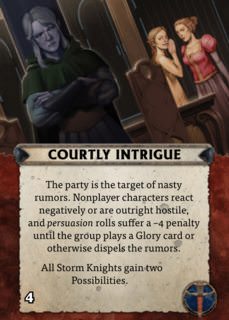
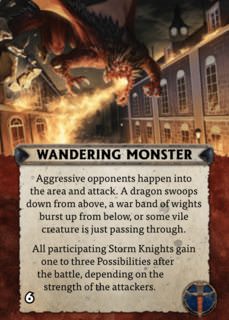
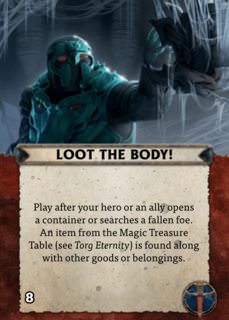
Cosm cards generally fall into the "flat bonus" or "suffer a setback but get X Possibilities" categories, but of course there are exceptions. But really, what makes them so good is that it takes these narrative beats and puts them in the player's hands, as opposed to being blunt instruments for the GM to hit players with.
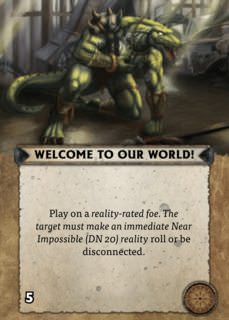
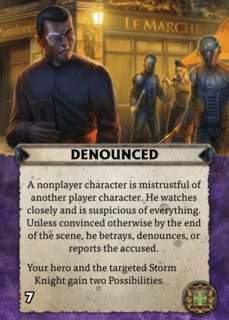
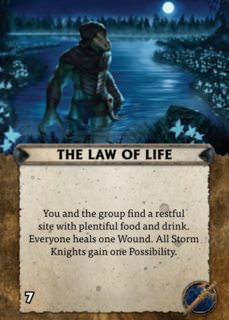
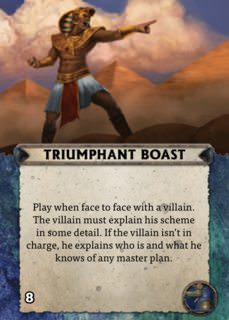
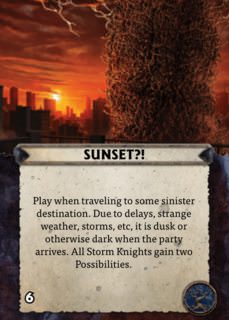
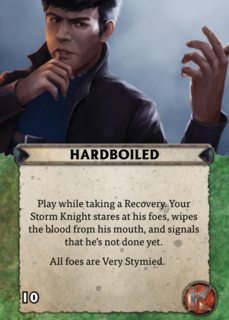
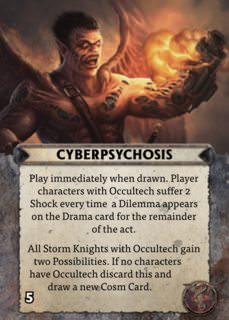
Now, there are a few more things I could get into, but I think I've hit most of the salient points. There's a few things I didn't cover, such as how Eternity Shards work and some more setting secrets, but I think you all get the jist of the new edition.
---
So what's my verdict?
Torg Eternity is...and I can't believe I'm saying this...it's actually good!
Believe me, nobody's more surprised than I am.
For ages I've been saying how I'd love a Fate-based version of Torg, and this new version has a lot of Fate in its DNA. Small adjustments like having a "refresh" and cards that act similar to invoking aspects really make a difference, but more than anything else the fact that mechanics have been unified and simplified are incredibly welcome.
Torg Eternity has learned the lessons of the present. There's no setting information that wouldn't be useful at the table, there's an understanding of how to make tone come through via mechanics, and the idea of needing ridiculous balancing mechanics because someone wanted a jectpack or to wanted to play an elf.
As I've said, I've run Torg Eternity for a few months now, and even with people who don't have tons of experience with non-D&D systems things move smoothly and quickly.
From day one of the oTorg review, I've said that Torg was my favorite setting with my least favorite system. Torg Eternity addresses the problems I had both with the systems and the setting to the point where it actually feels like a completely new game.
And believe me: I am so grateful you have no idea.
Now if you'll excuse me, I heard Dr. Mobius' forces are on the move. Time to team up with my lizardman archer and cyberwitch teammates and go to work.